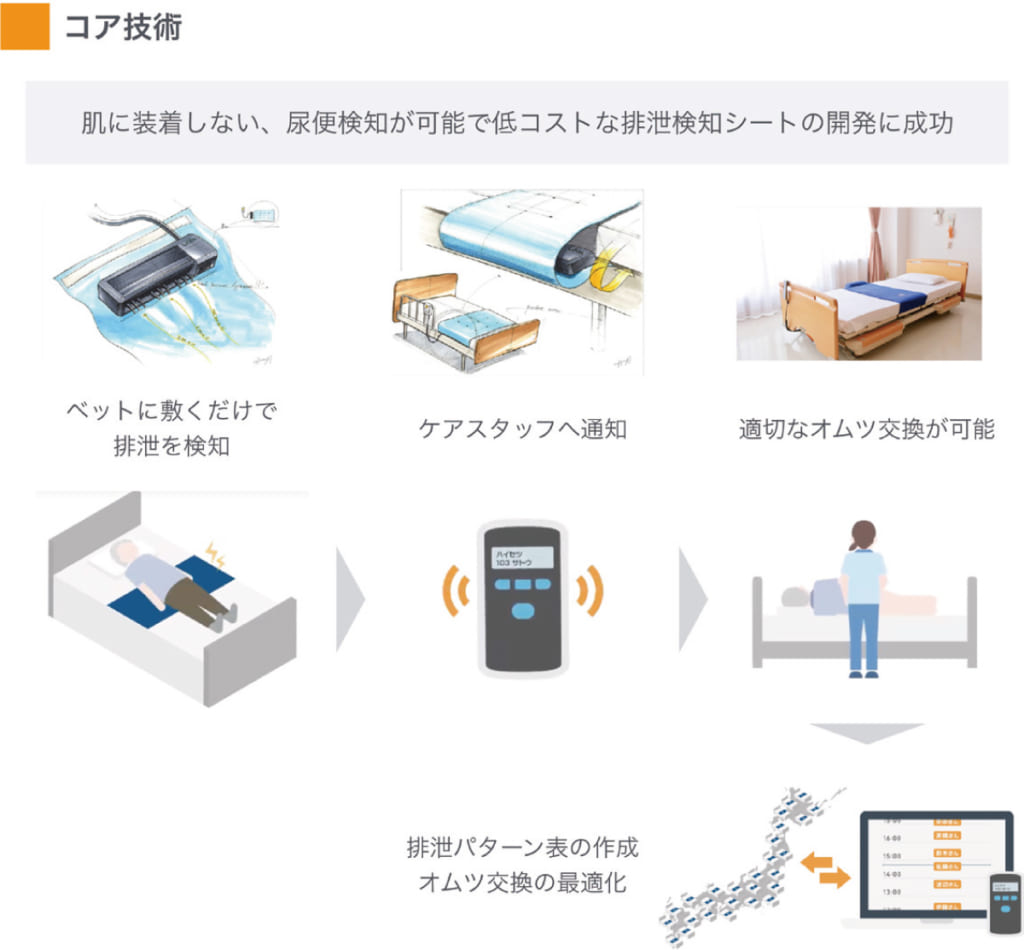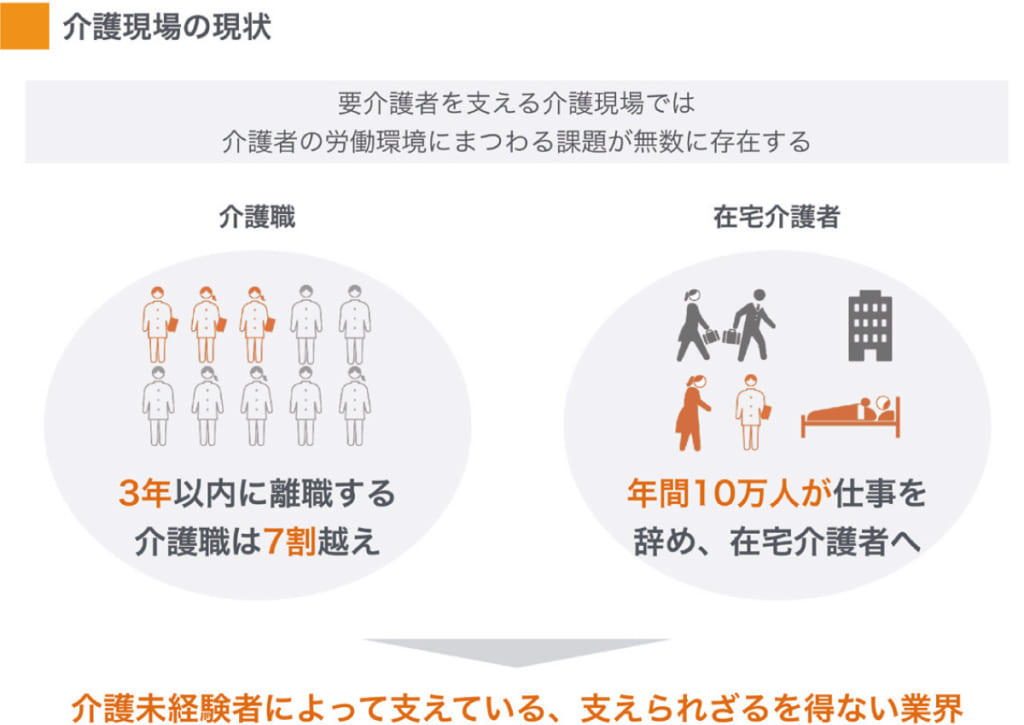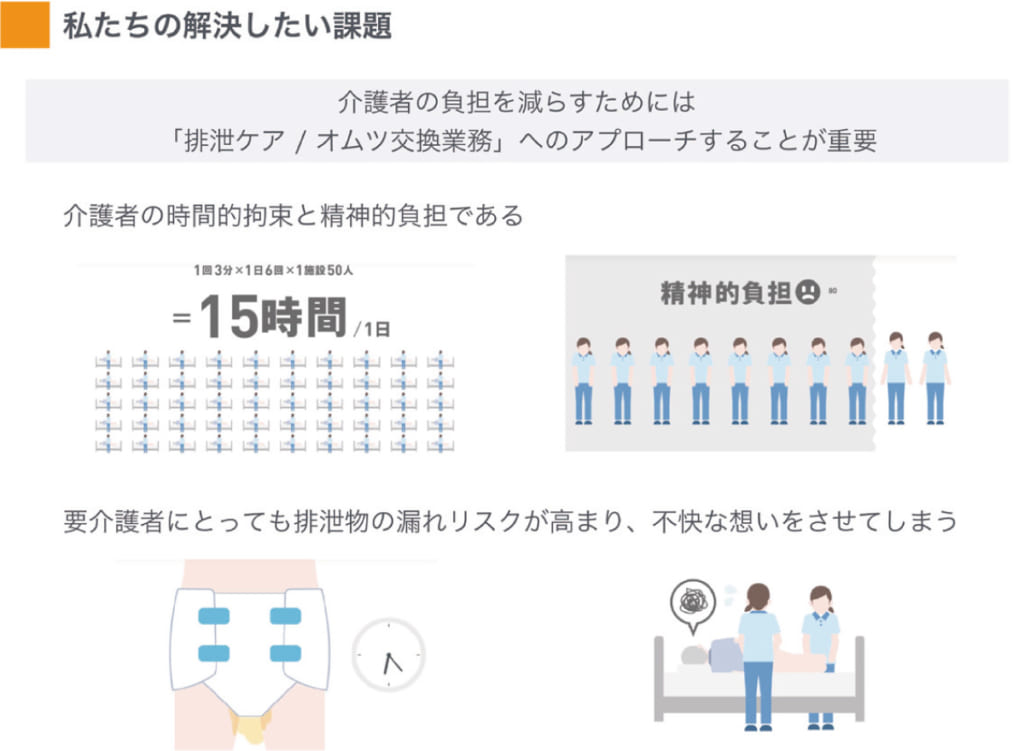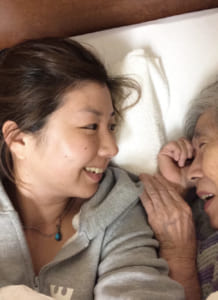- Announcements for middle and high school students
- Information for Middle and High School Researchers
- Information for Teachers
Toward a society where all people provide "care" and support each other
2020.09.09
Yoshimi Ui, Representative Director, aba Corporation
When her grandmother developed depression, Ui, a junior high school student, became involved in nursing care. The feeling of wanting to support her grandmother but not being able to do anything about it was the starting point for Ui.
When Mr. Ui was in junior high school around the year 2000, it was just the time when junior high and high school students began to have cell phones. It was a shock to me that, just like junior high school students in Tokyo, I in the countryside could do all kinds of things with a mobile phone," he said. He was so impressed by technology that he decided to study science and mathematics, but one of his turning points came when he learned about nursing care robots. His desire to "support someone" clearly overlapped with the possibilities of technology.
The Future Creators: The Birth of aba
I knew there were multiple jobs related to caregiving, including doctors, nurses and caregivers. All of these jobs are putting their lives on the line to change the current state of care with all their might, but I knew that as long as we rely on human resources, there is a limit to the number of people we can save. Because so many people are involved, we want to use the power of technology to lower the hurdles for people to participate in caregiving in the future. We began to think that this would lead to a society in which everyone could and would want to participate in caregiving," says Ui.
At the technical university where I went to school, there was an exercise where students had to start their own robotics project. This is where aba (aba) was established. While studying everything from basic robotics to cutting-edge applications at university, Mr. Ui realized that nursing care robots would not spread if things continued as they were. He wanted to create a future in which technology would be used in the nursing care field, so he named his project aba, an acronym for "awakened bunch activity. Thirteen years later, that desire has not changed.
Faced with a fierce nursing care situation
ABA was exploring the possibility of applying robot technology to the nursing care field. In order to learn about the issues in the field, he went to nursing care facilities. During one such visit, Mr. Ui received a life-changing shock at a special nursing home for the elderly.
A woman's cries of "whoop, whoop" were heard coming from the restroom of the facility. Two care workers were holding a woman with dementia down and squeezing her stomach to force her to defecate. She told us that her family had asked her to go home after she defecated. The reason was that it was too difficult to help her defecate at home. In tears, Ms. Ui asked, "Is this the kind of care he wants?" to which the staff replied, "I don't know either. Then, on this day, at the end of the day ceremony at this nursing home, I asked, "What kind of care equipment would you be happy to have?" It was a life-changing experience. This led to Helppad, the core product of aba today.

Against the backdrop of the rapidly aging population, the number of people who have to be involved in nursing care is increasing dramatically. In addition to the increasing burden of social security costs, new social problems have arisen, such as people leaving the nursing care workforce to retire or change jobs in order to provide nursing care.
Balancing the job of president and caregiver in order to gain in-depth knowledge of the field
Since that time, Project aba has been conducting research and development together with many people in the nursing care field. However, there was a gap between the university's "research results" and the frontline's "desire to bring a product to the market.
I myself originally thought that it would be better if I could produce results from my university research and then have companies put them to practical use. However, after the Great East Japan Earthquake of March 11, many of the projects I was trying to carry out with companies came to a halt. This was despite the fact that we had been struggling to build prototypes and experiment with them," he said. It was at that time that he was advised by those around him that there was a way to start his own company, which led him to establish the company.
After turning aba into a company, Mr. Ui said that for three years he was both the president and a caregiver. Because aba handles manufacturing as a group of engineers, it is necessary to know more deeply about what goes on in the field. He had a strong feeling that he needed to think things through to the point of possessing people in the field, but he also felt that there was still a gap between the users and the makers. He said, "People in the nursing profession are very observant. That is why they can communicate with people with dementia. When I became a caregiver myself, I realized that the ability to translate what happens in the field and people's emotions is important. ABA's technology can support that kind of translation.
Ltd. has refined its technology in the field of nursing care, and now works with Paramount Bed, a major nursing care bed company, to deliver its products to a large number of nursing care facilities.

Aiming for technology that even my middle school age self can utilize.
The driving force behind Ui's continued use of technology to solve nursing care issues is her desire to "never forgive.
There is a contradiction in caregiving. All caregivers care for one person to make another person happy. We want to do everything we can to make that happen. But sometimes the burden is so great that the caregivers themselves become ill, leave their jobs, or become unhappy. I believe this is the end of the line," he says. With this thought in mind, she says she is working with the intention of helping her junior high school self, who was unable to do anything about it.
For example, in 2050, the population will be even smaller and more aged than now. Then, care may not be available even for people in the early stages of dementia. Therefore, in such a situation, we need a system that makes it easier for everyone to provide care. The goal is to create a "doctor's bag" in the world of Doraemon, in which people can have expertise by using the system. I would like to save myself in the past by creating a future where everyone can use such a tool.
Recently, he has been active not only in his own company, but also in movements to change the nursing care field and the country from a higher perspective. He gives lectures at vocational schools in the hope of making technology more accessible to those in the field, and participates as a member of a working group of young people at the Ministry of Economy, Trade and Industry. The use of technology will become an integral part of the nursing care issue. We will continue to keep an eye on the activities of Mr. Ui, who continues to take on challenges at the cutting edge of this field.
(Text by Nobuaki Chou)
*Reprinted from "Education Support vol. 46

